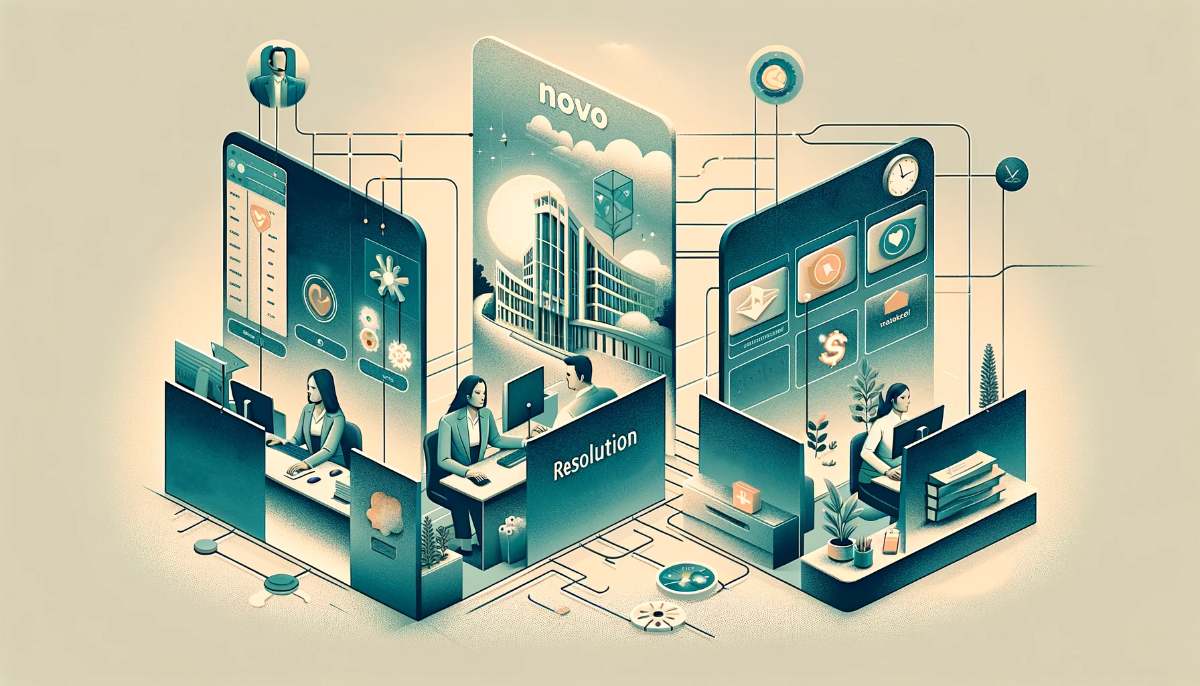Automated ticket routing can significantly enhance customer satisfaction by ensuring that customer queries are promptly and accurately addressed. For instance, consider a scenario where a customer has a complex issue related to a specific product feature. With automated ticket routing, this query can be immediately directed to an agent who specializes in that particular product feature, ensuring a quick and accurate response. This not only saves the customer’s time but also provides them with a solution that directly addresses their problem, thereby enhancing their overall experience.
Moreover, automated ticket routing can also help in reducing response times. In a traditional customer support setup, a customer’s query might have to wait in a queue before it is manually assigned to an agent. However, with automated ticket routing, the query can be instantly assigned to the right agent, significantly reducing the waiting time. According to a report, after experiencing excellent customer service, 93% of customers are inclined to make repeat purchases, highlighting the importance of quick and efficient responses.
“Automated ticket routing leads to quick, accurate customer support, with 93% of satisfied customers likely to make repeat purchases, highlighting the impact on customer loyalty.”
Another way automated ticket routing can improve customer satisfaction is by ensuring a balanced workload among support agents. When tickets are distributed evenly, agents are less likely to be overwhelmed, which can lead to better performance and more thoughtful responses to customer queries. For example, an agent who is not overloaded with tickets will have more time to thoroughly investigate a customer’s issue and provide a comprehensive solution, leading to a more satisfied customer.
Lastly, automated ticket routing can lead to cost savings for businesses, which can indirectly contribute to customer satisfaction. By reducing the time and resources spent on manual ticket assignment, businesses can allocate more resources towards improving their products or services, which can lead to a better customer experience. For instance, the money saved could be used to develop new features that customers have been requesting, thereby showing customers that the business values their feedback and is committed to meeting their needs.
Examples of how automated ticket routing has improved customer satisfaction

Automated ticket routing has been successfully implemented across various industries, leading to improved customer satisfaction. Here are a few examples:
Investment Management
Archer, an investment management solution, used AI to automatically tag an average of 6,000 tickets daily. This implementation cut their first response times in half, from 15-20 minutes to less than seven minutes. The saved time allowed their customer service agents to focus on finding the best solutions for their customers, thereby improving customer satisfaction.
Customer Support Services
A report from Zippia showed that 93% of customers are likely to make repeat purchases from a company after experiencing excellent customer service. Automated ticket routing plays a significant role in providing such service by ensuring quick replies to customer inquiries. This leads to a gratifying user experience, thereby improving overall customer satisfaction.
Software Solutions
Zendesk, a customer service software company, uses powerful AI tools to streamline customer service. These tools include intelligent ticket routing based on sentiment, language, and intent, as well as 24/7 deflection with bots. This automation provides fast, high-quality customer support, leading to positive customer experiences.
Customer Support Platform
DevRev’s ticket routing and assignment feature optimizes customer service by intelligently directing customer queries to the most appropriate support agent. This ensures swift and accurate resolution of each ticket, leading to improved customer satisfaction.
In each of these examples, automated ticket routing has not only improved efficiency but also significantly enhanced the customer experience. By ensuring that customer queries are promptly and accurately addressed, these companies have been able to increase customer satisfaction and loyalty.
Some case studies of companies that have successfully implemented automated ticket routing

Betsol: Betsol, a networking solution provider, implemented an intelligent resolution system that reduced support costs by 15% and improved response time by 20%. They achieved a 22% reduction in tickets routed to humans and increased automation to 94%. The system included a newer rules-engine for complex maintenance activities, built alarm correlation algorithms, and enhanced auto-routing of tickets to skill groups.
Novo: Novo, a financial institution, saw a 2-minute reduction in handling time per ticket, saving 400 agent hours monthly, by implementing Lang ai. This allowed their team to focus more on customer relationships. Around 60% of inbound tickets were automatically triaged and routed without requiring human intervention. Additionally, Lang.ai helped Novo eliminate over 95% of fraud attempts through ticket tagging.
NetDesign: NetDesign, a Danish MSP, implemented ScienceLogic’s AIOps platform, which led to an 80% automation of ticket creation and routing. They achieved a 56% incident noise reduction, an 11% faster average incident resolution time, and a 31% reduction in average incident cost. This was part of their strategy to enable more automation for incident response and operational workflows.
These case studies demonstrate the tangible benefits of automated ticket routing, including reduced support costs, improved response times, and more efficient use of agent time, all contributing to higher customer satisfaction.
Pros and cons of implementing automated ticket routing
Implementing automated ticket routing reduces errors, and improves productivity. However, it may require resource-intensive setup, staff training, and ongoing maintenance. Over-reliance on automation could lead to slower responses if the system fails. While it can personalize customer interactions, it may also reduce the personal touch if not complemented with human service. Despite potential long-term savings, initial costs can be high. It also requires fine-tuning for effective distribution of complex tickets and additional investment for scaling.
| Implementing ATR | Pros | Cons |
|---|---|---|
| Efficiency | – Increases productivity by automating the distribution of tickets. – Reduces the chance of errors in ticket assignment. |
– Initial setup and integration can be resource-intensive. – May require training for staff to adapt to new processes. |
| Response Time | – Improves response times by quickly routing tickets to the appropriate agents. – Can handle high volumes of tickets efficiently. |
– Over-reliance on automation might lead to slower responses if the system fails or is not optimized correctly. |
| Customer Satisfaction | – Enhances customer satisfaction with faster and more accurate support. – Personalizes customer interactions by routing to specialized agents. |
– Potential for a less personal touch in customer interactions if not complemented with human service. |
| Cost Savings | – Reduces labor costs by automating routine tasks. – Can lead to long-term savings by increasing efficiency. |
– Initial costs of implementing the system can be high. – Ongoing maintenance and updates may incur additional costs. |
| Workload Management | – Evenly distributes tickets to prevent agent overload. – Can adapt to fluctuating ticket volumes without additional staffing. |
– May require fine-tuning to ensure fair and effective distribution of complex tickets. |
| Scalability | – Easily scales to accommodate business growth and spikes in ticket volume. | – Scaling may require additional investment in more advanced AI capabilities or system upgrades. |
| Error Reduction | – Minimizes human error in ticket routing. – Consistently applies business rules for ticket handling. |
– May not account for nuanced or exceptional cases that require human judgment. |
| Adaptability | – Can be updated to reflect changes in business processes or service offerings. | – May lack flexibility in handling unique or new types of customer queries without reconfiguration. |
Common misconceptions about automated ticket routing
Automated ticket routing is a powerful tool in customer service, but there are several misconceptions about it. Here are some of the most common ones:
- Automated ticket routing lacks personalization: Some people believe that automation can’t deliver personalized customer support. However, this is not true. Automated ticket routing can actually enhance personalization. For example, by tagging tickets and employing smart routing, automation ensures queries reach the right specialists promptly, providing a more personalized customer experience.
- Automation takes jobs away from humans: Another common misconception is that automation will replace human jobs. While automation may change the nature of some tasks, it doesn’t necessarily eliminate jobs. Instead, it can free up customer service representatives to focus on more complex tasks that require human intervention.
- Automated systems are too complicated: Some people believe that automated systems are too complex to implement. However, many automated ticket routing systems are user-friendly and can be easily integrated into existing customer service processes.
- Automation is too expensive: There’s a belief that automation is costly and only suitable for large companies. However, there are various affordable automation solutions available that can be beneficial for businesses of all sizes.
- Automation leads to more escalations: Some people think that automation can lead to more customer escalations. However, effective automated ticket routing can actually reduce the number of escalations by ensuring that tickets are promptly and accurately addressed.
- Automated ticket routing can’t handle complex queries: There’s a misconception that automated systems can’t handle complex customer queries. While it’s true that some queries may require human intervention, many automated systems are capable of handling a wide range of queries, including some complex ones.
- Automation detracts from customer service quality: Some people believe that automation can reduce the quality of customer service. However, when implemented correctly, automation can enhance customer service by improving efficiency and accuracy.
Remember, while automated ticket routing can bring numerous benefits, it’s important to choose a system that fits your specific needs and to train your team properly to use it.
Conclusion
Automated ticket routing offers significant benefits, including enhanced customer satisfaction, improved efficiency, and cost savings. It ensures prompt and accurate responses to customer queries, reduces response times, and balances workload among agents. However, it requires careful implementation, including initial setup, staff training, and ongoing maintenance. Despite these challenges, the benefits make it a worthwhile investment for businesses aiming to improve their customer service processes. The successful implementation of automated ticket routing across various industries, as demonstrated by the case studies, underscores its potential to significantly enhance the customer experience and increase customer loyalty.
If you like this post, check out other AI-related articles:
Cutting costs, not corners: How AI chatbots reduce customer support expenses
How to integrate AI with your existing ticketing system


